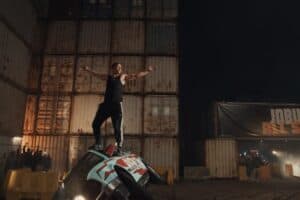Ogier pips Rovanpera in epic WRC race which showcased the unique challenges Africa has to offer.

While Africans are deprived of Formula One, MotoGP and the Dakar Rally, there is one top-flight motorsport event flying the continent’s flag on the global stage in unwavering fashion.
The famous Safari Rally Kenya is an event that is intertwined in Africa’s motorsport’s DNA. Staged in late June, this year’s event was the third since the historical rally regained its World Rally Championship (WRC) status in 2021.
This year marked the 70th anniversary of the race. The original event was held in 1953 in celebration of the coronation of Queen Elizabeth II, hence its original name of East African Coronation Safari. It was in Kenya, still under British rule, where Queen Elizabeth learned of her father King George VI’s death.
Incidentally, this year’s event was held seven weeks after the coronation of the late queen’s son King Charles III. He succeeded his mother after 70 years as British monarch.
But enough royal talk and back to rallying. The Safari Rally Kenya again lived up to its reputation as one of the toughest WRC events, testing man and machine against some of the harshest conditions Africa has to offer.
ALSO READ: Prototype mild-hybrid Toyota Hilux teased testing in Kenya
Scenic surroundings
One of the biggest challenges came between stages in civilian traffic conditions, which can be atrocious at the best of times due to congestion.
Run over 19 stages, the route meanders through the Great Rift Valley just north of Kenyan capital Nairobi. It twists and turns over mainly gravel roads which, along with some interesting undulations, makes the event a hugely popular spectacle.
Some viewing spots along the route were bursting at the seams with fans camping out from early morning with cold beverages to the festive tunes of their music. Joining the locals in eating dust while recording every passing rally car on their phones were fans from neighbouring countries Uganda and Tanzania. Their happiness off the chart watching history unfold in front of their eyes.

Toyota Gazoo Racing cleans up
After four days and 19 stages, the Toyota Gazoo Racing world rally team continued their recent dominance of the race. The four GR Yaris Rally1 hybrid cars completed the perfect race by taking the top four spots.
Eight-time WRC champion Sebastian Ogier and navigator Vincent Landais held off current world champion Kalle Rovanpera and Jonne Halttunen’s challenge to win by a mere 6.7 seconds, the closest winning margin in the event’s history.
ALSO READ: Ford’s 2024 Dakar entrant revealed as new threat for Toyota
Elfyn Evans and Scott Martin finished 2:51 back from Rovanpera, with Takamoto Katusuta and Aaron Johnston 25sec adrift in fourth.
The mood was less jubilant in the Ford and Hyundai camps. They are the other factory teams which are competing with Toyota Gazoo Racing in the top-class Rally1 category.

Behind the scenes
Attending the race as guests of Toyota Motors South Africa, our contingent was granted the rare privilege of being allowed into Toyota Gazoo Racing’s headquarters at the designated service point (DSP) outside Naivasha. After witnessing the humble conditions in which many of the private teams in the lower Rally2 and Rally3 categories operate in the DSP, the setup in the factory teams’ garages is next level.
In Toyota Gazoo Racing’s case, the four Yaris’ each had their own dedicated bay in the garage with dozens of mechanics and their tools awaiting the cars. Next door a facility with big components ready to be fitted is on hand.
ALSO READ: Drought over as Ford clinches 1-2 in Botswana desert
Like clockwork
And to see these parts being fitted is a sight to behold. The mechanics are put on the clock with a time allowed between stages of 42 minutes.
Next door, at least a dozen Toyota Gazoo Racing engineers sit in front of their laptops and analyse data. Along with live footage of the race, they try and maximise the numbers. Pretty much like those clever people we see on television, giving information to the F1 drivers from the pitwall.
To complete the operation, there is a mobile kitchen and dining making sure everyone take in all their nutrients.
Rally legend on hand
As an extra treat, we also had the opportunity to rub shoulders with Finnish rally legend Juha Kankkonen. The four-time WRC world champion won the Safari Rally Kenya three times. The last in 1993 behind the wheel of a Toyota Celica Turbo 4WD.

“The Safari Rally Kenya is the most challenging race on the WRC calendar,” he said.
“It has earned its reputation because of the vast distances between stages and the extreme challenges on the route itself. And today’s cars are much quicker than back in my day,” the Finn added.
Seeing Kankkonen powerslide this Celicia around a gravel corner on old video footage is rather special. But seeing the modern rally cars whiz past you at 200 km/h on a dirt track with the savannah and Lake Naivasha as a backdrop is not too shabby, either.






